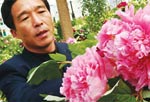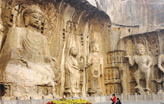Factory fever
Updated: 2011-03-11 11:39
By Patrick Whiteley and Wang Chao (China Daily European Weekly)
"Even second-tier cities are evaluating the odd/even license number plate restrictions at the moment," he says.
Another major hurdle for new car buyers is the price of oil, he says.
"Gas prices have broken through 7 yuan (0.76 euros) barrier for the first time in history and that is going to squash many people's automotive dreams in the near future," Sutcliffe says.
In 2010, for the second consecutive year, China was the world's largest auto market as vehicle sales jumped 32 percent thanks to stimulus measures and economic growth.
However, as predicted, industry wide auto sales growth slowed in January to 16 percent after China reinstated a 10 percent sales-tax on small cars this year and took away subsidies for vehicle trade-ins in the countryside.
GM announced recently it sold 184,498 vehicles in China in February with deliveries rising 5.8 percent from a year earlier, compared with a 22 percent increase in January, when sales reached a record of 268,071 vehicles.
Despite the slowdown and production bubble warnings, China's major car companies still believe that factory expansions are a must in a land where millions of families continue to save to buy their first car.
According to the Automotive Industry Development Research Institute of China, the nation has only 40 cars for every 1,000 people, compared to some European countries that have more than 700 per 1,000 people. The exponential growth is no-brainer, carmakers believe.
"If we do not invest in our plants, then we'll miss out on sales opportunities, which will be snapped up by our rivals," Bernd Pichler, managing director for Volkswagen in China, said in the KPMG report. "It's a risk worth taking."
Volkswagen announced in November last year it will invest 10.6 billion euros in China over the next five years as the German car giant aims to become the world's largest automaker, surpassing Toyota in sales and profitability by 2018. And its game plan hinges on building more factories in China.
VW has two joint ventures in China: one with SAIC, located in Shanghai and First Auto Works (FAW), which is based in Changchun, the capital of Jilin province in the country's northeast.
As all international car brands aim for higher sales, their Chinese joint venture partners are expanding their own industrial networks and also developing more home-grown brands.
FAW has production bases in 14 provinces in China involving local brands, trucks, buses and parts. But Changchun is its main auto hub and the company aims to produce 5 million automobiles by the end of 2015, with 3 million vehicles rolling off factory lines in the northern city.
FAW president Zhang Pijie says the company invested 12.9 billion yuan (1.4 billion euros) in research and development during 2006-2010, and plans to increase this figure to 19 billion yuan over the next five years.
"A considerable part of the investment will go to electric cars. By 2015, car sales will exceed 4 million, among which more than 50 percent will be self-developed brands," he says. "Our third factory is expected to be completed in 2013."
The tree-lined city of Changchun is steeped in automotive history with FAW producing the first Chinese-made car and truck there when it set up operations in the 1950s. About 50 percent of the nation's passenger trains are also built in this city of 7.5 million.
E-paper

Rise and shine
The Chinese solar energy industry is heating up following recent setbacks in the nuclear sector
Bombs aim for regime change
CSI, with a twist
Literary path
Specials

Peony express
Growers of china's unofficial national flower are reaching out to europe for help

Tea-ing up
More turning to Chinese tea for investment opportunities like vintage wine

A cut above
The ancient city of Luoyang is home to a treasure trove of cultural wonders.
